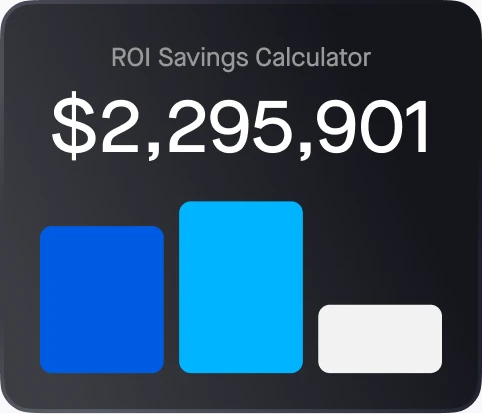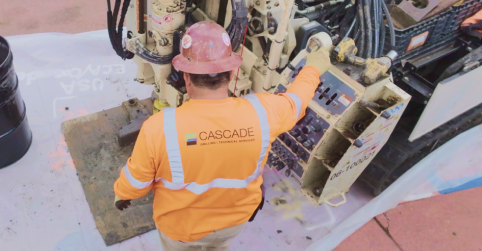Driver safety is a top priority for any fleet operation. From reducing accident risk to protecting company reputation, the way drivers behave behind the wheel directly impacts every aspect of fleet performance. That’s why more and more fleet managers are turning to driver behavior monitoring — a proactive approach that combines telematics and AI vision technology to improve safety, reduce costs, and build a culture of accountability.
This blog explores what driver behavior monitoring is, how it works, and why it’s becoming an essential part of modern fleet safety strategies. We’ll also show how Motive’s AI-powered dash cams help fleets monitor behavior in real time and provide actionable insights that lead to better outcomes on the road.
What is driver behavior monitoring?
Driver behavior monitoring is the process of tracking and analyzing how drivers operate their vehicles. This includes behaviors such as:
- Speeding
- Harsh braking or acceleration
- Distracted driving
- Lane drifting
- Fatigue or drowsiness
- Following too closely
By using dash cams, GPS fleet tracking, and telematics data, fleet managers gain real-time visibility into how drivers are performing and where risks may exist. Monitoring this behavior allows for timely coaching, training, and intervention before unsafe habits result in costly incidents.
Why driver behavior monitoring matters
1. Reduce accidents and liability
Unsafe driving is one of the leading causes of fleet-related accidents. Monitoring driver behavior enables companies to identify high-risk patterns and take steps to correct them — often before an accident occurs.
Fewer accidents mean fewer injuries, lower repair costs, and reduced liability. In industries where safety is critical, such as logistics, construction, and field services, these outcomes are essential for protecting both people and assets.
2. Lower insurance costs
Many insurance providers offer reduced premiums for fleets that use behavior monitoring technology. Why? Because fleets that invest in safety tools like dash cams and telematics are statistically less likely to be involved in accidents.
In the event of a crash, video evidence also helps resolve claims faster and reduces the risk of false accusations.
3. Improve driver performance
Driver monitoring isn’t just about identifying problems — it’s a powerful tool for coaching and improvement. By giving drivers feedback based on real data, fleet managers can:
- Reinforce safe habits
- Address risky behavior early
- Offer targeted training based on actual performance
When implemented with the right approach, monitoring can build trust, improve morale, and support long-term driver retention.
4. Enhance company reputation
Fleets that prioritize safety demonstrate responsibility to their customers, partners, and the public. With growing attention on road safety and corporate accountability, proactive behavior monitoring shows your company takes risk management seriously.
How driver behavior monitoring works
1. Data collection
Using AI-powered dash cams, GPS devices, and telematics systems, the vehicle collects data on how it’s being driven. This includes:
- Speed relative to posted limits
- Acceleration and braking patterns
- Steering behavior and lane changes
- Use of mobile devices or signs of distraction
- Seatbelt usage and fatigue detection
2. Real-time alerts
Advanced systems like Motive’s can detect unsafe behavior in real time and send alerts to both the driver and fleet manager. This allows for immediate correction, potentially preventing incidents on the spot.
3. Video context
When risky behavior is detected, AI dash cams capture video clips before and after the event, providing critical context. This footage is invaluable for coaching and claim investigation.
4. Driver scoring and reporting
The system generates a driver safety score based on individual behavior. Fleet managers can view trends, identify top performers, and focus coaching efforts where it’s needed most.
Over time, consistent monitoring and feedback lead to measurable improvements in performance and fewer incidents across the fleet.
Motive’s approach to driver behavior monitoring
At Motive, we believe safety starts with visibility. Our AI-powered dash cams and telematics platform offer real-time driver behavior monitoring, giving fleets the tools to detect, analyze, and improve performance on the road.
Key features include:
- Real-time detection of distracted driving, speeding, tailgating, and other unsafe actions
- Instant alerts to drivers and managers for timely intervention
- Automatic video capture for full context on risky behavior
- Driver safety scores and trends to guide coaching
- Configurable coaching workflows for ongoing performance improvement
With Motive, driver monitoring becomes more than just a safety tool — it becomes a driver development program that helps fleets build a culture of accountability and continuous improvement.
Conclusion
Driver behavior monitoring is no longer optional for modern fleets — it’s essential. With the right tools in place, companies can reduce accidents, improve performance, lower costs, and protect their drivers and brand.
As fleet safety becomes a higher priority across industries, technologies like AI-powered dash cams and real-time telematics give fleet managers the edge they need to operate more safely and efficiently.
Motive’s platform brings all these tools together, helping fleets take control of driver safety with actionable insights and industry-leading technology.Explore how Motive can help you improve safety and performance with driver behavior monitoring.




